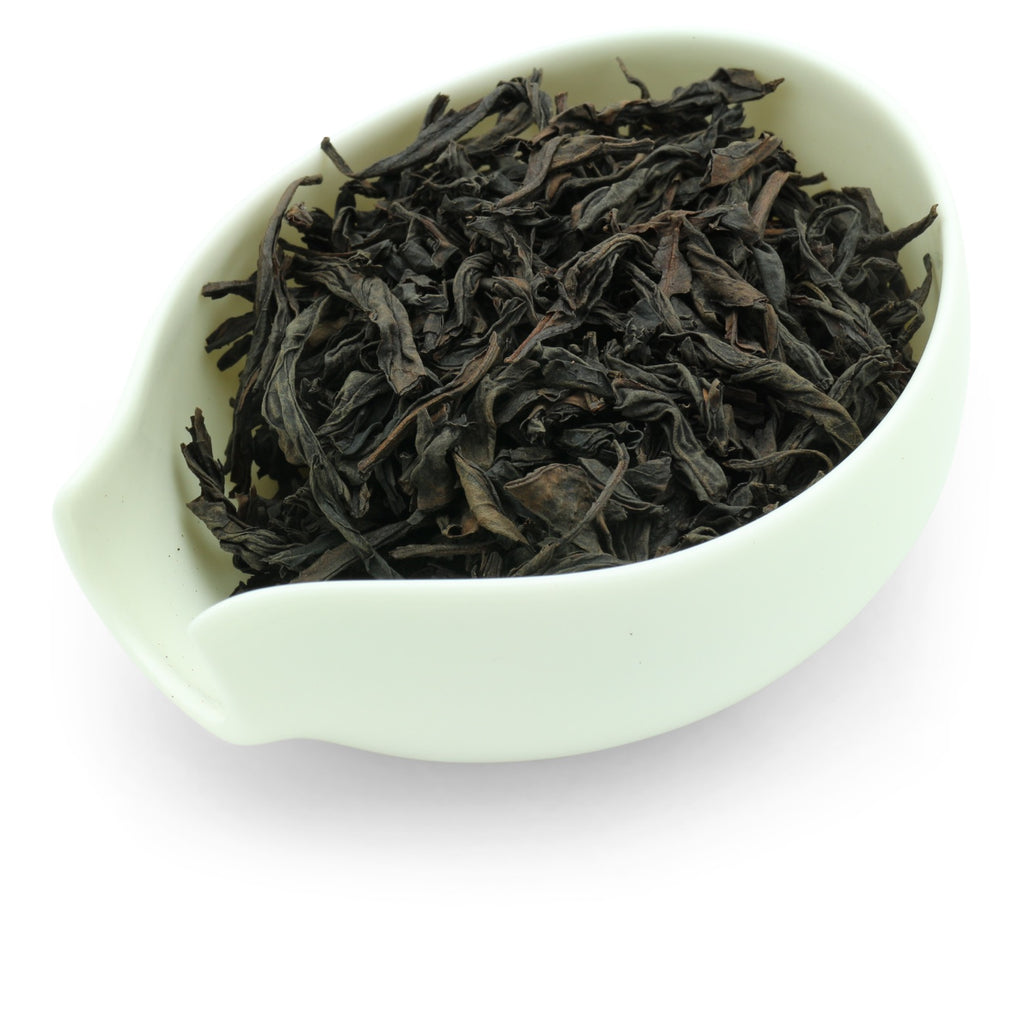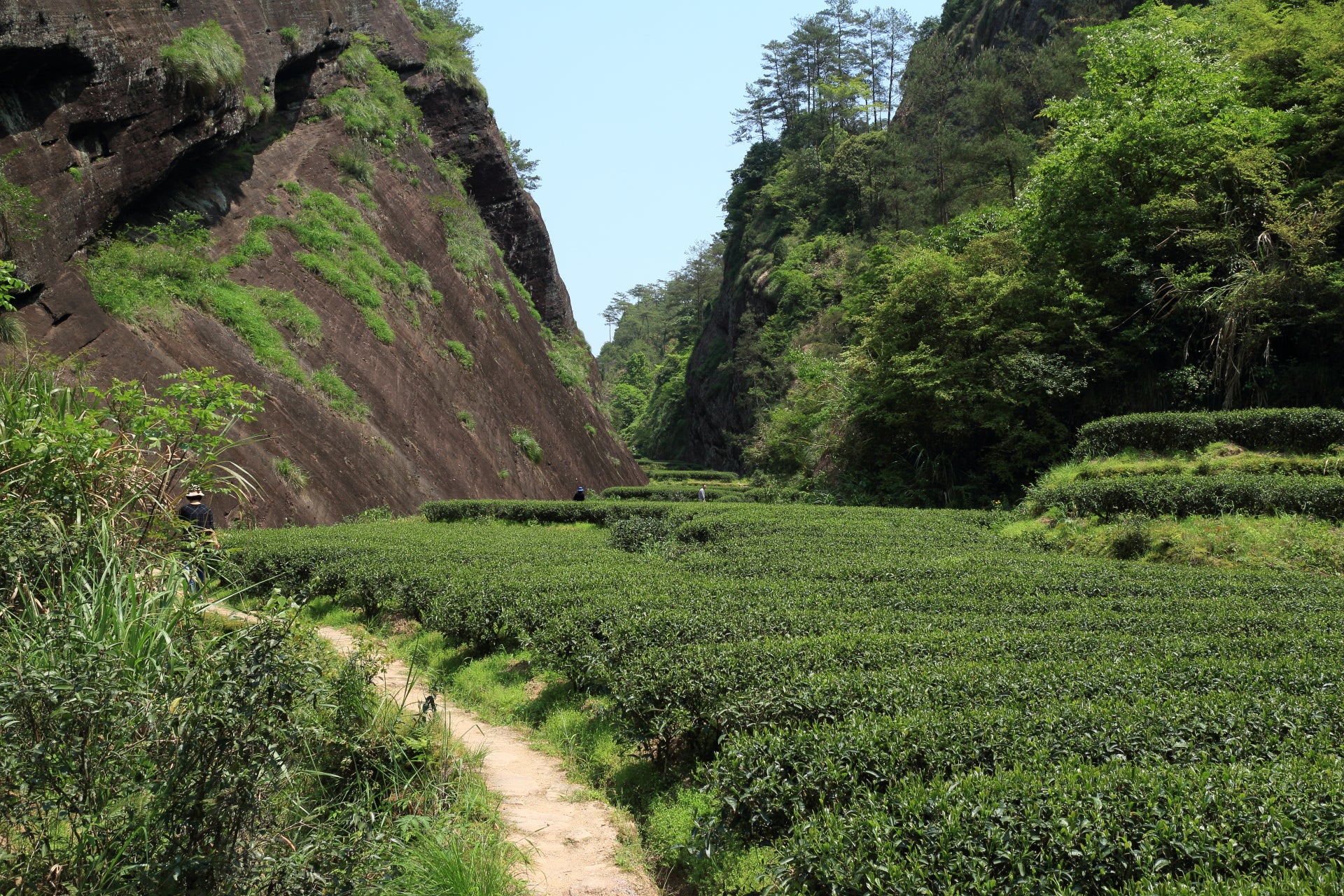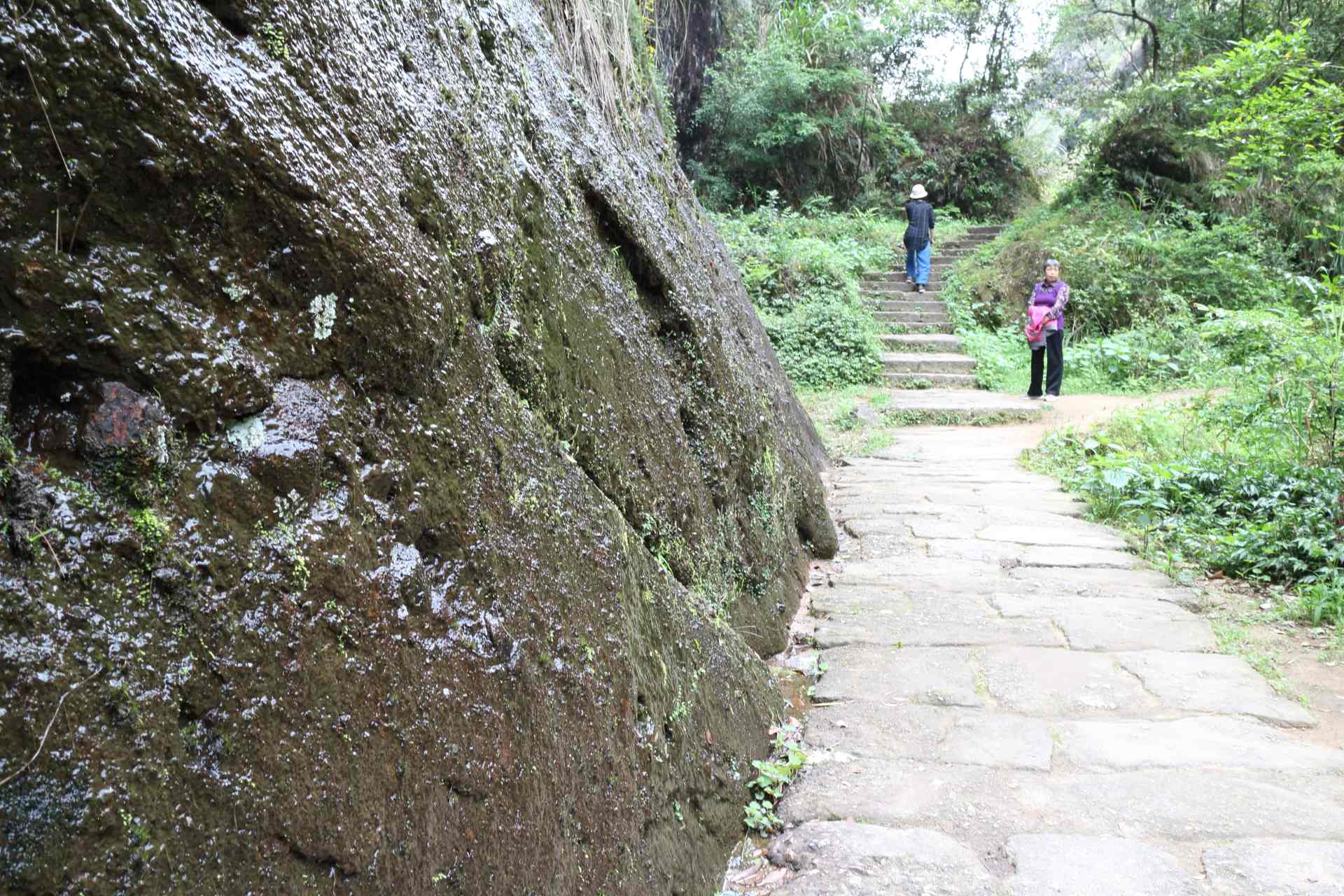Bishiyan Rougui
Dieser reichhaltige und kräftige Rougui ist genau das Richtige für alle, die ein Verlangen nach dem feurigen, holzkohleartigen Yancha-Geschmack haben, mit einem dunklen Alkohol und einer Nase voller Kakao. Dennoch ist es dem Hersteller gelungen, einen beißenden, übermäßig gerösteten Charakter zu vermeiden. Der intensive Körper mit der namensgebenden Kassiarinden-Note geht leicht unter, und ein leichter Geschmack, vielleicht von getrockneter Kirsche, gleicht die schokoladige Bitterkeit aus. Er weckt den Appetit oder stillt ihn, indem er in Schnapsgläsern vor einem knisternden Feuer getrunken wird.
- HERKUNFT: Bishiyan, Wuyishan, Nanping, Fujian, China
- WAS DER NAME BEDEUTET: Grüne Felsenklippe Kassia (bi shi yan rou gui)
- ZÜCHTUNG: Rougui
- GEERNTET IM: April 2021
- GESCHMACK: Kassia, Kakao, getrocknete Kirsche
- Menge: 6g / 500ml
- Wassertemperatur: 100°C
- Ziehzeit: 5 Min.
- Menge: 3g / 100ml
- Wassertemperatur: 100°C
- 4 Aufgüsse: 45, 60, 60, 90 Sek.
Die besten Ergebnisse beim Gongfu Cha erzielen Sie, wenn Sie den Tee im traditionellen Gaiwan oder in einer Yixing-Teekanne zubereiten. Eine zu hohe Wassertemperatur könnte die Blätter verbrennen und zu einem bitteren Geschmack führen.
Zusätzliche Informationen
Authentic Wuyi Yan Cha is produced in the Wuyi Mount region, a UNESCO natural heritage site. The dramatic gorges of the Nine Bend River are surrounded by a largely intact subtropical forest and smooth cliffs of black-brownish rocks. The tea plants grow in narrow valleys, next to the cliffs, in a mineral-rich soil.
Today Wuyi Yan Cha is one of the most valued teas in China. Because it has become a status symbol, many wealthy Chinese are willing to pay a fortune for it without even knowing how a proper Wuyi Yan Cha should taste. The result has been prices inflating to unjustified level and quality often sacrificed for quantity.
Unique to the Wuyi Yan Cha is a mineral savor coming from the soil and the surrounding cliffs. Being the oolong with the highest fire finish, fresh Yan Cha may as a result be strong and pungent. Sharpness and too-prominent astringency subside upon ageing. Premium high-fire Yan Cha tastes better after a few years of storage. Use a Yixing teapot to soften the tea, should it be too astringent for your palate.
The overall tasting profile is rich, complex, and deep. Depending on cultivar and environment, the mineral-roasted flavor is refined by floral, fruity, nutty or woody accents.










